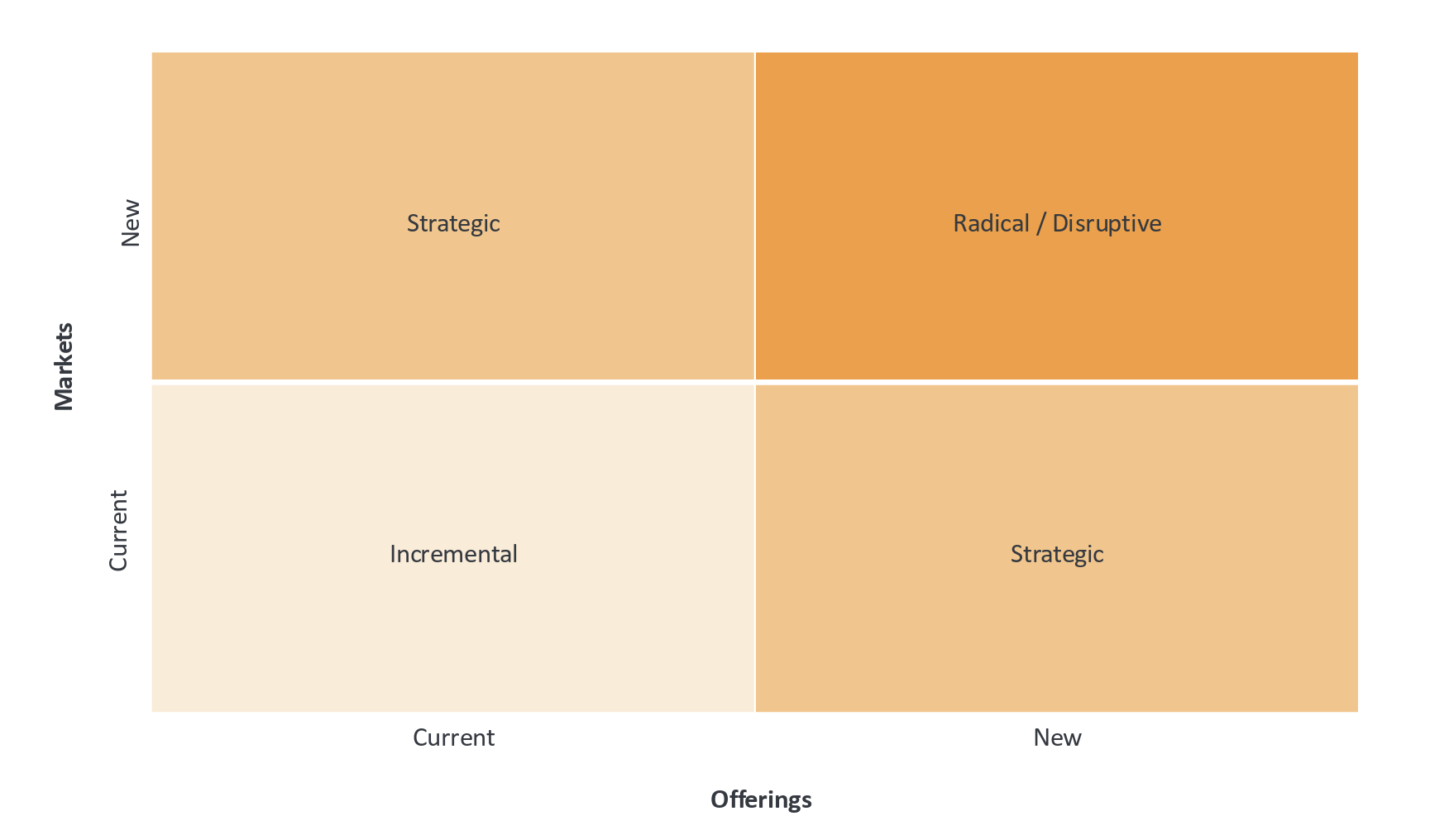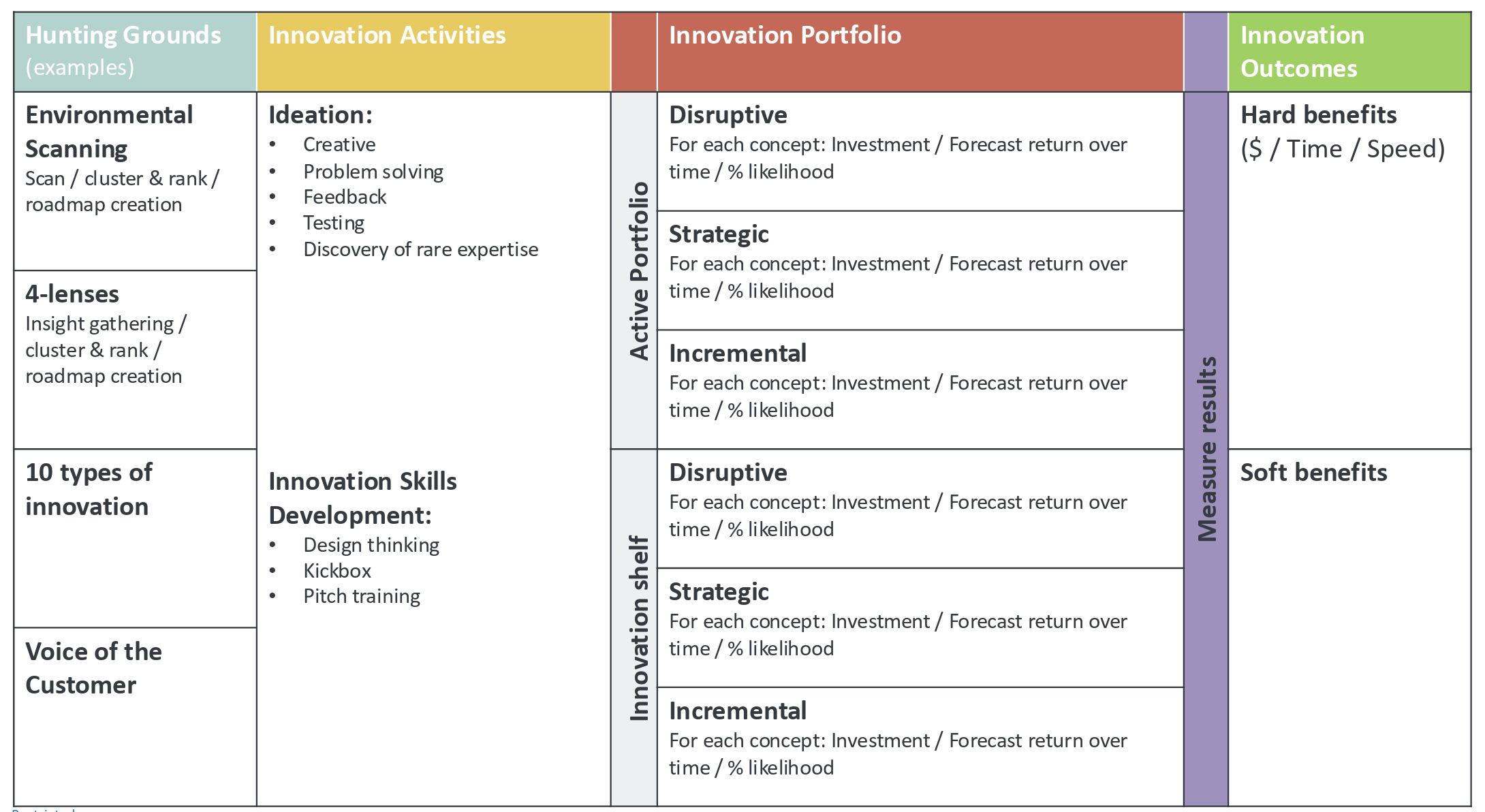Innovation is tomorrow’s growth. Portfolio management is how you decide which “tomorrows” to fund—and which to stop.
This page captures the highlights from a focused knowledge session led by Colin Nelson, HYPE’s Chief Innovation Consultant. Below you can either read the concise summary of Colin’s practical playbook for building and governing high-impact innovation portfolios, or watch the full recording for the complete session and examples.
Use the summary for a fast read; watch the recording for the full discussion, Q&A and real-world case examples.
Why Portfolio Management Is Surging in Relevance
Growth pressure isn’t new. What is new: disruption cycles keep shrinking while resources stay finite. Big organizations decentralize innovation (divisions, countries, P&Ls), which helps execution but obscures what’s actually being built. Without a transparent, governed portfolio, the future becomes guesswork.
The Portfolio Problem (In Plain Terms)
- Low transparency: new things are scattered across teams and tools.
- Weak governance: pet projects sneak through; good bets stall.
- Long cycles vs. fast markets: fivey-ear bets meet 18-month shifts.
- Core vs. capabilities: we sell X today, but our real assets may point elsewhere.
Leaders want a simple, predictive view of value (revenue, profit, timing, risk). Innovators want fair selection and resource clarity. Both need a way to pivot as evidence changes.
What “Good” Looks Like
- Local flexibility, common spine: teams work their way, but share a macro process and minimum data so the whole can be governed.
- Independent forecasting: concept owners don’t grade their own homework.
- Regular reviews: stop, start, or doubledown with evidence.
- A home for “not now”: an Innovation Shelf for good ideas paused due to timing, tech, or budget.
Eight Best Practices You Can Implement Now
1) Pick a Process (then iterate)
There’s no perfect model—stage-gate, agile, hybrid all work. What matters:
- Stages map to your real decision points (money, capacity, compliance).
- Different types (incremental/strategic/disruptive) can have lightly different tracks.
- Treat the process as a product: review and refine.
An Example:

2) Balance by Context, Not a Fixed “Golden Ratio”
Retire the one-size-fits-all. Balance depends on urgency to change and industry disruption. Use an Ansoff matrix (offerings × markets) to visualize spread and ask:
- Are we overweighting incremental when our core is eroding?
- Do our strategic bets fill the 2–3 year revenue gap?
- Are we carrying a few high-uncertainty, high-optionality shots

3) Keep Governance Simple
Make it easy to participate and easy to compare:
- One macro process, one platform (or single system of record).
- A Minimum Viable Data set (see best practice #6) for every concept.
- Central roll-ups for visibility; local autonomy for execution.
4) Create an Innovation Shelf
A searchable home for good concepts you’re not doing now (tech not ready, budget tight, wrong timing). Capture at least:
- Opportunity magnitude (order of magnitude is fine)
- Work done so far; key assumptions and blockers
- Fit to capabilities/strategy
- When a live project stops or a slot opens, pull from the shelf first.
5) Decouple People from Outcomes
Treat innovation as a funnel, not a pipeline. Most things shouldn’t ship.
- Reward good process (clear learning, timely kill decisions), not just launches.
- Normalize “we tested it properly and we’re stopping” as a success for the system.
- Reallocate talent and budget fast when evidence says pivot/stop.
6) Standardize a Minimum Viable Data Set
For every concept, capture five fields so you can compare apples to apples:
1. Money in (budget required)Use this to build confidence-weighted views of the portfolio.
7) Build Agility Into Reviews
- Gate reviews offer support, not just “go/no-go.”
- Use independent assessors to sanity check forecasts.
- Tap collective intelligence mid journey to unblock, derisk, and value boost (“How do we add +10% impact or −5% cost before rollout?”).
8) Make KPIs & Dashboards Predictive
Leaders need a line of sight from bets to business outcomes. Useful lenses:
- Portfolio mix by horizon/Ansoff quadrant
- Confidence weighted impact by quarter/year
- Capacity allocation vs. plan (and redeployment after kills)
- Cycle times by stage; kill ratio and reasons
- Shelf health: items, age, revival rate, wins from shelf

Quick Start (30–60 Days)
1. Inventory: stand up the macro process and capture the 5-field data for all active concepts (and a first pass at the shelf).
2. Visualize: plot the portfolio on an Ansoff matrix and produce a confidence weighted forecast.
3. Govern: schedule monthly portfolio reviews; decide stop/continue/boost; refill from the shelf.
4. Normalize behavior: announce that timely kills are good practice; publicly recognize teams who do it well.
Key Takeaways
- Portfolio management is about focus and evidence, not bureaucracy.
- Simple, shared data enables fair choices and faster pivots.
- A maintained Innovation Shelf turns “not now” into future options.
- Independent forecasting plus regular reviews improves hitrate and spend efficiency.
- Balance your portfolio by disruption reality, not a textbook ratio.
Ready to turn your portfolio into a single source of truth?
If you want help applying Colin’s playbook to your organization, book a free, no-pressure consultation or request a personalized demo of HYPE’s portfolio capabilities.
Our experts will help you:
-
Assess your current portfolio governance and spot quick wins
-
Map the right KPIs and reporting to satisfy execs
-
Design a pilot to prove value in 90 days (budget-friendly)
-
See how a single system-of-record brings visibility, auditability and faster decisions






